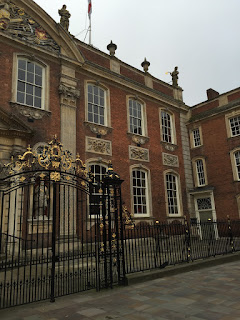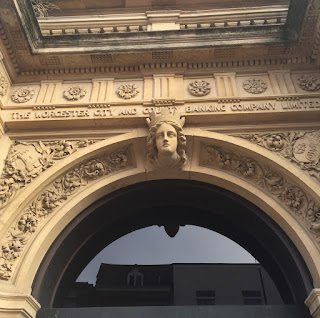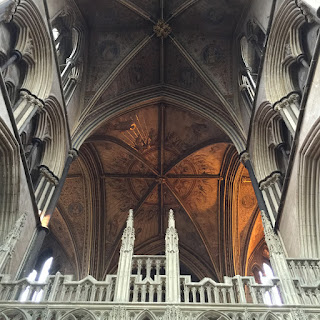But I knew my restraint would not last, especially when I was let loose again in the regions where face-covered facades are the norm. For a while after going travelling in those areas, I still managed to abstain, even if all the time I was hording examples; like a 1950s holidaymaker in possession of a cine camera, I longed to share/bore people senseless with/ my pictures.
And today, for some reason, (the fact that I have some time free at last?), my resistance has finally broken; I am now going to begin the process of unleashing a torrent of lions and ladies and moustachioed gents onto an unsuspecting world.
I'll start with just two towns today but they will soon be followed by others. Watch out. You have been warned.
The first town whose faces I present is Debrecen, the capital of Hajdu Bihar county, in Hungary.
Anyway the faces I did snap were all from round the back of this building:
The next lot are from Worcester, which I would be the first to admit is not a town that could even faintly conceivably be described as part of the Austro-Hungarian empire. Nevertheless, it has a reasonably good supply of stone faces. Mind you, I expect it had many more once, before one or other of its town councils made the decision to demolish the medieval centre and provide instead a selection of multi-storey carparks. To date, no architect on earth that I know of has turned their attention to designing carparks of grace and beauty and therefore the effect on Worcester has been predictably dispiriting.
The town when approached from the riverbank, up steps leading to the cathedral, looks wonderful, but quite quickly dribbles out into the usual modern Britain scunginess of litter strewn streets smelling of Subway sandwiches (is there a less appetising smell in the takeaway world?) and populated with branches of that chain of bun shops that always signal poverty, plus the usual array of charity shops that represent all that remains of the nation of shopkeepers we were all taught was the essence of Britain. After about three in the afternoon, most of the people on the streets are overweight, drunk, angry or, from their expressions, almost on the point of suicide. Yet the cathedral is beautiful, a reminder that humanity can create wondrous things - or could once.
Here are the faces I collected, mostly from one building, the magnificent Worcester Guildhall which mercifully escaped the let's-sweep-away-the-old-and-bring-a-bit-of-modernity-to-this-fusty-place brigade:
Here is the approach to the cathedral end of Worcester, along the riverbank on a foggy morning - all looks promising:
This is the cathedral:
 |
| I find these kneecaps enchanting |
 |
| Poor swan, lain on for eternity |
Unfortunately an aesthetic sense seems to have deserted the Worcester clergy as thoroughly as it did its councillors:
There also appears to be a mismatch between what they say they offer and what is actually available to worshippers:
Poor Worcestor. There are still fragments of a fine town:
The cathedral close in particular remains lovely, despite the concrete shopping centre now opposite it, the result not of World War Two bombing but senseless planning decisions post war:
All too often though the visitor to Worcester is left wondering, "What were they thinking?"
But never mind, Starbucks is coming. Happy times undoubtedly lie ahead:







































































No comments:
Post a Comment